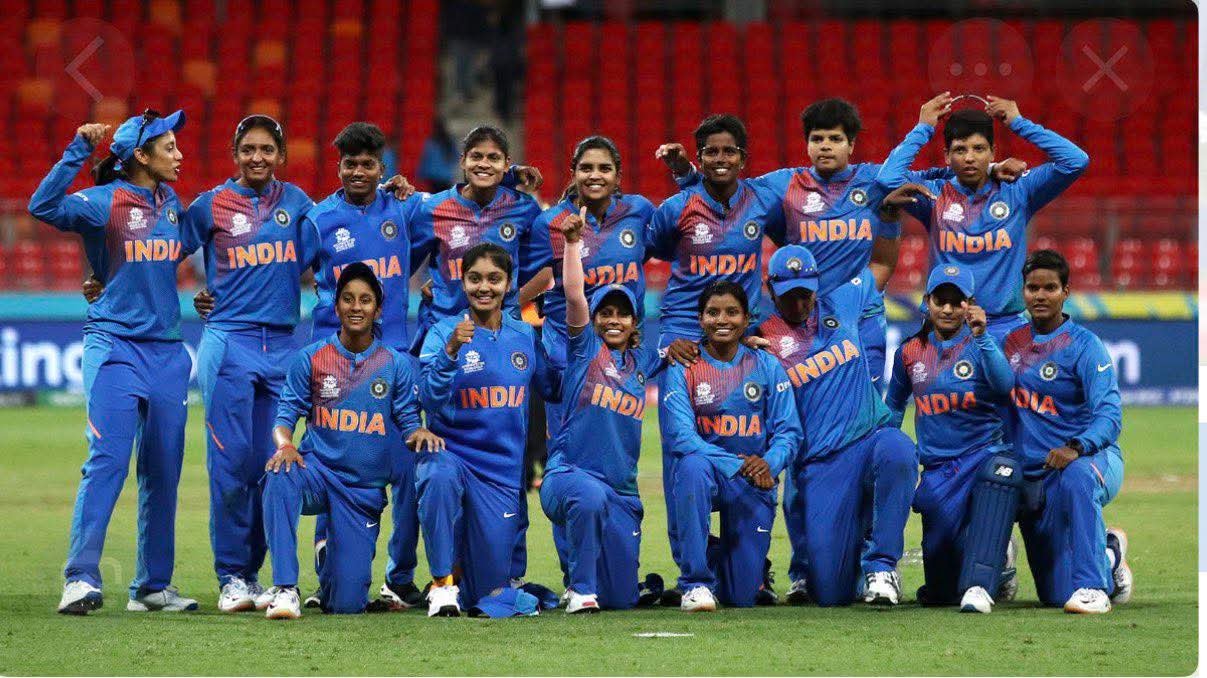On a cool November evening at Navi Mumbai’s Dr. DY Patil Stadium, the roar of 50,000 fans echoed across the stands as India’s women’s cricket team lifted their first-ever ICC Women’s Cricket World Cup trophy. The 52-run victory over South Africa marked not only a sporting triumph but a cultural milestone — the moment when Indian women’s cricket came of age on the world stage.
The win ended a long wait — 43 years after India’s men scripted history at Lord’s in 1983. For the women’s team, which had been striving for global glory since the 1970s, this victory was more than a medal. It was redemption, recognition, and revolution rolled into one.
The Journey: From Struggles to Stardom
The Early Days
Women’s cricket in India began in the 1970s with little attention, fewer resources, and almost no media coverage. The Women’s Cricket Association of India (WCAI) was formed in 1973 — run mostly by passionate volunteers. The first recorded international appearance came in 1976 against the West Indies.
For decades, women cricketers played with minimal financial support, often traveling without proper gear or allowances. Yet, passion kept the sport alive. Names like Diana Edulji, Sandhya Agarwal, and Shantha Rangaswamy became symbols of resilience, paving the way for future generations.
The 2000s: A Quiet Rise
The 2005 ODI World Cup saw India, led by Mithali Raj, reach the final for the first time — an achievement that announced India as a global contender. Although Australia defeated them, it inspired a new generation of girls to pick up the bat and ball.
In 2006, the BCCI officially took over the administration of women’s cricket in India. This was a turning point: players started receiving better facilities, contracts, and exposure.
The Modern Era
The 2017 World Cup was a watershed moment. Under Harmanpreet Kaur, India reached the final after Harmanpreet’s legendary 171* against Australia — a knock that changed how India viewed women’s cricket. The team fell short in the final against England, but public attention had shifted permanently.
Since then, India’s women’s cricket has seen a steady rise. The creation of the Women’s Premier League (WPL) in 2023 provided players international exposure and financial independence. The pipeline of young talent grew stronger — with stars like Shafali Verma, Richa Ghosh, Jemimah Rodrigues, and Renuka Thakur emerging from grassroots systems once thought inaccessible to women.
The 2025 World Cup Triumph
Road to the Final
India’s campaign began with a clear mission — to go one step further than before. They dominated the group stage, winning crucial matches against England and New Zealand, and narrowly defeating Pakistan in a high-tension chase.
The semi-final against Australia was a nail-biter. Chasing a massive total, the duo of Harmanpreet Kaur (79) and Jemimah Rodrigues (66) guided India to a historic win, marking their first-ever World Cup victory over Australia in a knockout match.
The Final Showdown
The final against South Africa was a test of nerves. Batting first, India scored 287/7 — powered by Shafali Verma’s 87 and Deepti Sharma’s 58.
When South Africa began their chase, India’s bowlers maintained relentless pressure. Deepti Sharma produced one of the finest all-round performances in World Cup history, taking 5 wickets for 29 runs, sealing India’s 52-run victory.
Captain Harmanpreet Kaur lifted the trophy as the crowd erupted in chants of “Bharat Mata Ki Jai!” — a sight once reserved only for men’s cricket.
Heroes of the Victory
Harmanpreet Kaur – The Captain of Steel
Leading from the front, Harmanpreet combined calm leadership with fierce intent. Her ability to inspire the dressing room, handle pressure, and believe in young players made her the heart of this success.
Shafali Verma – The Firestarter
The 21-year-old opener played fearless cricket throughout the tournament. Her quick starts set the tone for every innings, and her performance in the final cemented her reputation as India’s “Sehwag in disguise.”
Deepti Sharma – The All-round Dynamo
The Player of the Final and arguably the Player of the Tournament, Deepti’s consistency with both bat and ball made her indispensable. Her control under pressure reflected the maturity of modern Indian women’s cricket.
Smriti Mandhana – The Elegant Aggressor
Though she missed a few matches due to injury, Smriti’s contributions in key games — especially against New Zealand — kept India afloat in tight situations.
Richa Ghosh – The Young Finisher
At just 21, Richa showcased the composure of a veteran. Her late-innings hitting rescued India multiple times and added depth to the lineup.
Why This Win Matters
- A Breakthrough for Women’s Sport in India
The 2025 World Cup victory has catapulted women’s cricket into mainstream Indian consciousness. For decades, women athletes fought invisibility — now they dominate headlines. The success promises increased investment, sponsorships, and viewership.
- Inspiration Beyond Cricket
The triumph goes beyond sport. It tells every Indian girl that gender should never define dreams. Players like Harmanpreet and Deepti, coming from small towns, have become role models for young women across rural India.
- A Cultural Shift in Sports Narrative
For years, cricket was seen as a man’s game in India. This victory challenges that narrative. The stadiums were packed, TV ratings soared, and social media exploded with pride — showing that women’s cricket can command equal passion.
- Recognition at the National Level
Prime Minister Narendra Modi and President Droupadi Murmu publicly congratulated the team, calling their win a “historic chapter in India’s sporting journey.” The BCCI announced a ₹51 crore cash reward for the players — an unprecedented acknowledgment of women’s achievement in Indian cricket.
- A Boost to the Women’s Premier League (WPL)
The victory is expected to increase WPL’s popularity, attract global players, and motivate corporate investment. It could transform the domestic structure for women’s cricket, just as the IPL did for men’s.
The Broader Journey: Changing Perceptions
For long, women cricketers were forced to live in the shadow of their male counterparts. Interviews were rare, endorsements almost non-existent, and matches were seldom televised. But now, women’s cricket is not just a parallel sport — it’s the sport of a new generation.
The 2025 win symbolizes the result of decades of effort by forgotten pioneers and current icons alike. Players like Mithali Raj and Jhulan Goswami, who carried Indian cricket through years of neglect, laid the foundation for this victory. Their legacy now finds fulfillment.
The Road Ahead
India’s World Cup triumph is not the end — it’s the beginning of a new chapter. To sustain success, investment in grassroots cricket, better infrastructure, and equal pay policies will be vital.
The win has already inspired increased enrollment in women’s cricket academies across India. Media houses are dedicating more coverage to domestic women’s tournaments. The next challenge is ensuring that the momentum doesn’t fade with time.
💬 Voices of Pride
Harmanpreet Kaur: “We didn’t just play for a trophy. We played for every girl who was told she couldn’t dream.”
Deepti Sharma: “This win is not just ours. It belongs to every coach, every parent, every fan who believed in us.”
Mithali Raj (former captain): “They’ve done what our generation dreamed of. Women’s cricket in India will never be the same again.”
A New Dawn
As fireworks lit up the Navi Mumbai sky, one could sense the shift in India’s sporting soul. The sight of the Indian women lifting the World Cup wasn’t just a moment — it was a message.
A message that equality in sports is achievable. That persistence pays. That history belongs to those who dare to dream.
For India, 1983 was about belief.
For 2025 — it’s about breaking barriers.











